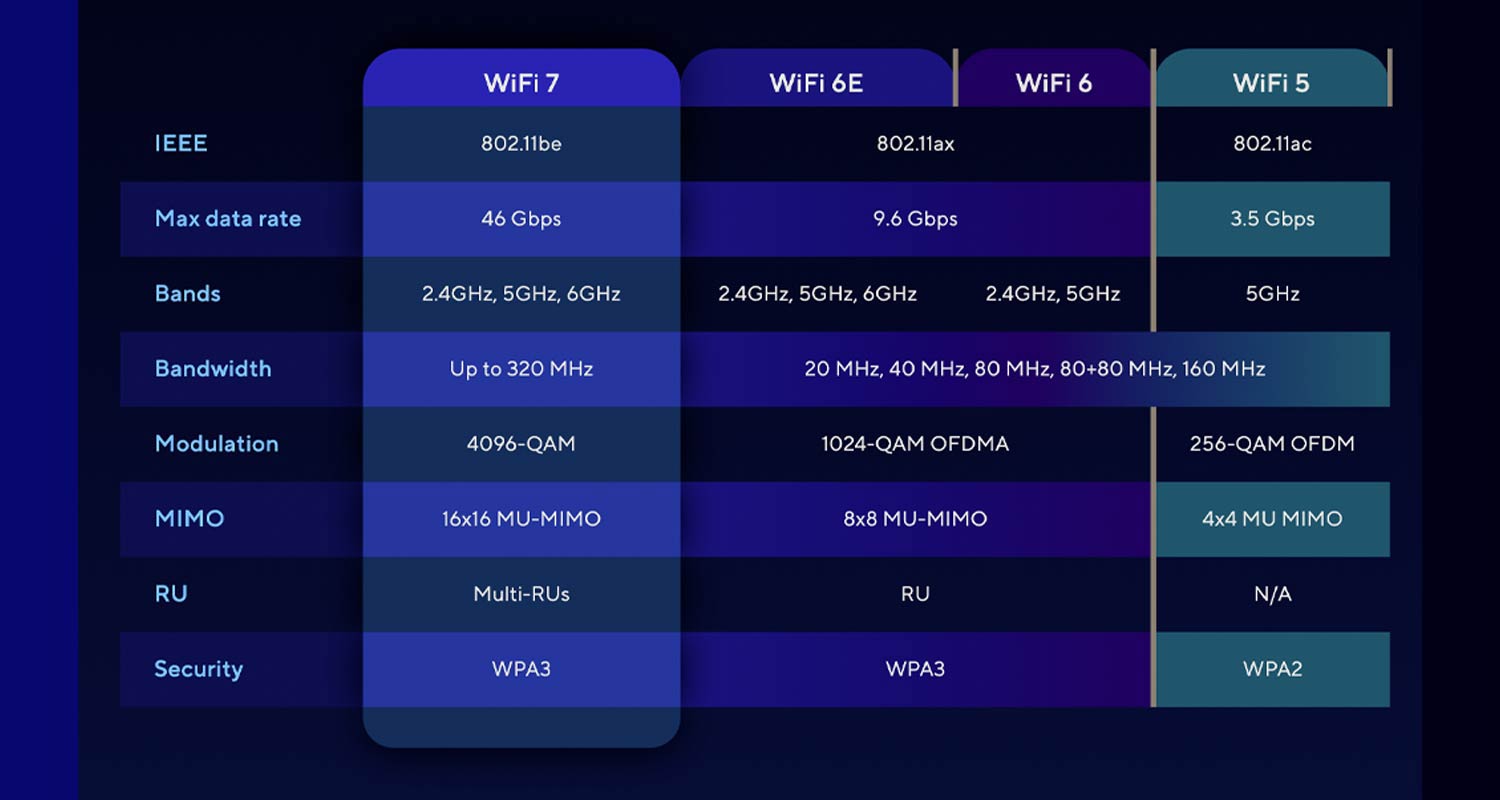 Wi-Fi 7 is the next frontier in unlicensed wireless communication, promising to speed up internet connections with downloads of up to 46Gbit/s — nearly five times as fast as what’s possible with Wi-Fi 6.
Wi-Fi 7 is the next frontier in unlicensed wireless communication, promising to speed up internet connections with downloads of up to 46Gbit/s — nearly five times as fast as what’s possible with Wi-Fi 6.
Of course, these speed claims are theoretical, and users are unlikely to achieve that sort of performance in real-world conditions. However, that the new standard offers far higher throughput than its predecessors is not in contention (see table below).
Indeed, Wi-Fi 7 builds significantly on previous Wi-Fi standards with a primary focus on speed, explained Paul Colmer, executive committee member at the Wireless Access Providers Association.
He said each evolution in Wi-Fi technology has brought faster speeds and increased data handling capabilities, facilitating the connection of more users.
One big advantage with Wi-Fi 7 is its ability to aggregate three radio frequency bands at the same time, providing a significant increase in throughput.
To understand the significance of Wi-Fi 7, it’s crucial to acknowledge the evolution of wireless standards, Colmer said.
From the early days of 2.4GHz to the recent Wi-Fi 6 advancements, each iteration has aimed to address the growing demands for faster and more reliable connectivity. Wi-Fi 7, with its expanded spectrum utilisation, takes a leap forward by incorporating the lower 6GHz band, which has already been opened for use in South Africa.
Spectrum
However, it’s not clear yet how quickly users will adopt the new standard in their homes and businesses. Colmer said this is contingent on regulatory approvals and the release of additional spectrum for public use.
Wi-Fi 7 technology brings tremendous potential, especially in addressing challenges posed by legacy devices and network congestion. Colmer said the efficiency of Wi-Fi 7 lies in its ability to handle diverse bands simultaneously.
Read: Icasa opens big chunk of 6GHz band to Wi-Fi
Unlike its predecessors, Wi-Fi 7 aggregates three bands, ensuring better range, penetration and overall network performance, a bit like a donkey, a horse and a car all pulling together at the same time, he said.
One of the challenges in the widespread adoption of Wi-Fi 7 lies in spectrum allocation. Colmer said that while some countries have already opened the entire 6GHz band, South Africa is still in the process of doing so.

While Wi-Fi 6E – an evolution of the Wi-Fi 6 standard – increased channel width (bandwidth) to 160MHz, Wi-Fi 7 introduces ultrawide 302MHz channels, doubling data transmission capacity. The potential economic benefits of Wi-Fi 7, estimated at US$57-billion over a 10-year period according to the Dynamic Spectrum Alliance, further emphasises the importance of timely spectrum allocation, he said.
As Wi-Fi 7-enabled devices begin to go on sale in South Africa this year, consumers can expect significant improvements in connection speeds and overall performance. Colmer said this aligns with the growing demand for high-speed connectivity, particularly in applications such as augmented reality and virtual reality. It also promises more robust connectivity solutions in large public areas such as airports and stadiums. — (c) 2024 NewsCentral Media
AI-generated summary of this article
- Wi-Fi 7 is the latest generation of wireless technology, offering speeds up to 46Gbit/s and improved efficiency and reliability.
- Wi-Fi 7 can aggregate three radio frequency bands, including the lower 6GHz band, for better performance and range.
- Wi-Fi 7 adoption depends on regulatory approvals and spectrum allocation.




